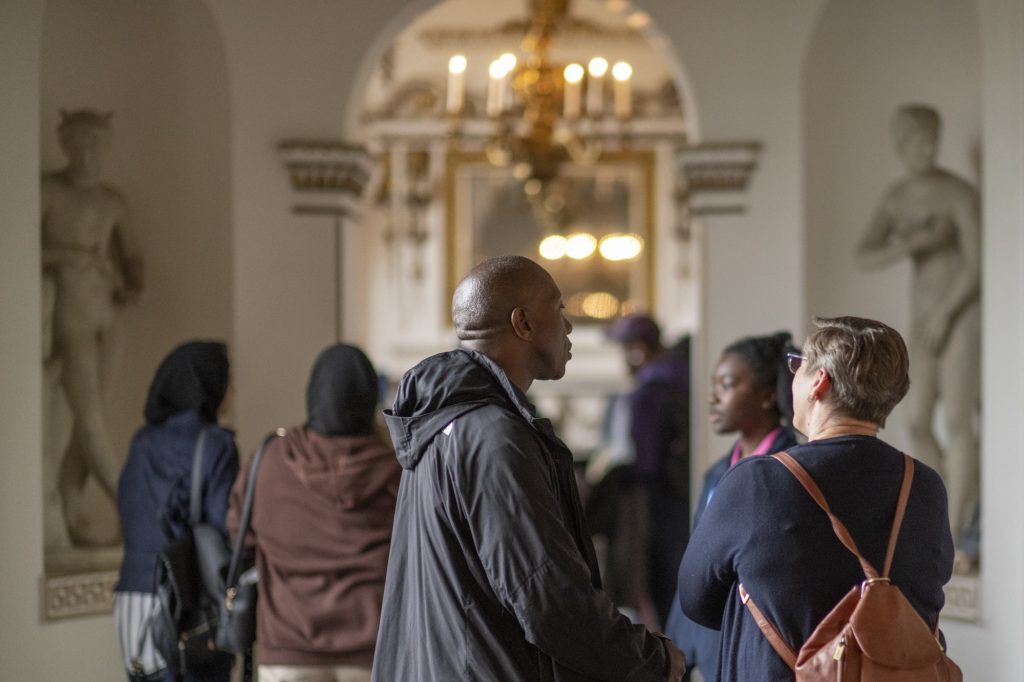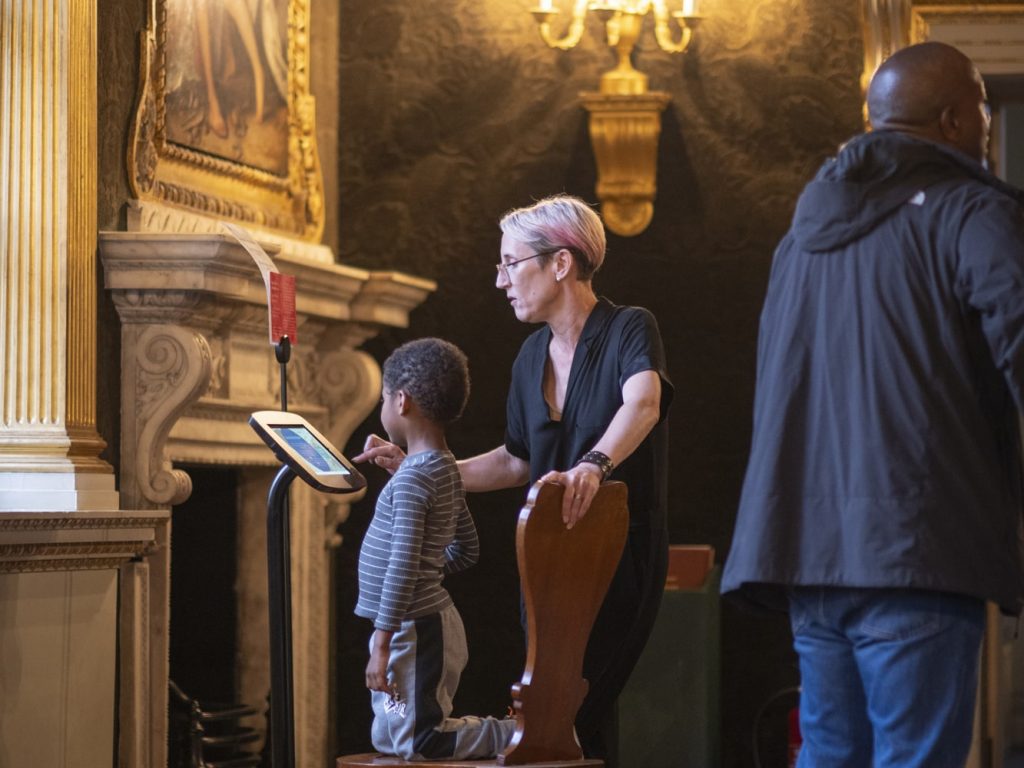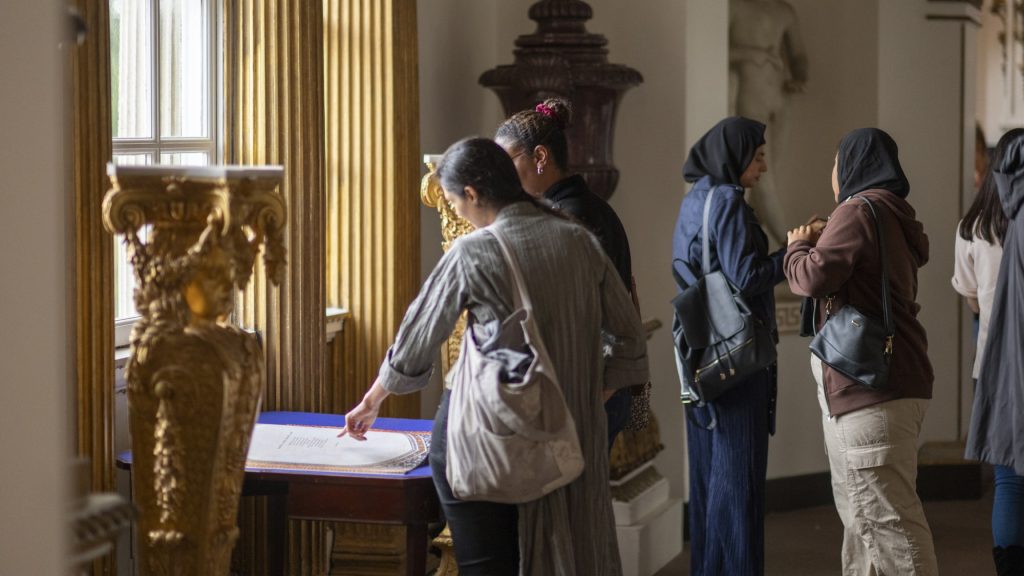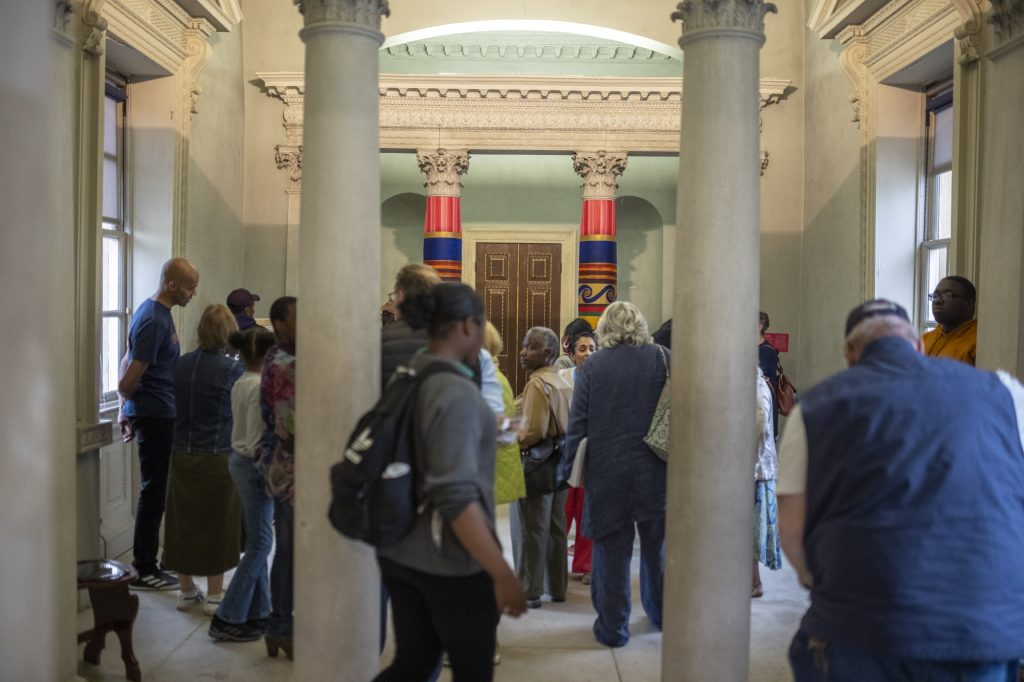Reflections on Black Chiswick through History – Year 2
Following months of community workshops, collaborations and creative activity, Harvinder Kaur Bahra, our Community Participation Manager takes a moment to reflect on Black Chiswick through History and shares her learnings from Year 2 of the project.
The Project
Black Chiswick through History is an ongoing community research project, which aims to look more deeply at our collections at Chiswick House & Gardens, exploring Black history, links to people of colour, empire, and colonialism.
Helping to redefine how we understand both our global and local history, the project brings together curators, historians, artists and local young people (from Hogarth Youth Centre (HAY), Hounslow Action for Youth and Chiswick School). To explore, question and respond creatively to our collections and importantly share this work with all who visit Chiswick House & Gardens. The project was launched during Black History Month in 2021, inspired by staff research into the Black servants and tradespeople who had worked at Chiswick House & Gardens in the 17th and 18th Century. (You can read more about Year 1 here: Enriching our Interpretation)
This is why I work in museums and in the heritage sector. It’s this kind of collaborative project that challenges traditional ways of working in heritage spaces that motivates me.
The project successfully brings together local communities and young people to explore a place of heritage and historical collections and consider what it means to us today. It brings these places to life with relevant and current voices. Their creative responses, on display in the House ask visitors to stop and look and think a little more carefully about how we are all deeply interconnected in ways to celebrate and acknowledge.

Challenging the traditional narratives
There’s no better place to do this work than in Hounslow, with one of the most diverse and vibrant communities in the UK. But where many feel places of local heritage are not for them, or do not tell the stories that knit us and our histories all together. All of us at Chiswick House & Gardens Trust are committed to doing this work, work that both challenges the traditional narratives and places our communities at the centre of our visitors’ experience. However, we also recognise that this work is not without its challenges and risks: Will the process feel truly collaborative as initially stated? Will we get the tone right? Will any young people turn up? How will be find a ‘shared’ voice in a group? Will the artists be able to realise the ideas of the group? Will we be considered ‘woke’? Will there be criticism in ‘decolonising’ our collections?
If we are brave enough to do the work that many heritage organisations shy away from, or don’t feel they have the skills to undertake, then we have to accept we won’t get it right for everyone. Trying to recentre the narrative around our local young people and their voices will sometimes be difficult, but we are eager to learn from it in order to inform and strengthen both the project and our community partnerships. Ongoing and open conversations around this work also improves our approach to these topics and reflects our own responsibilities in undertaking and presenting this work.

Making shared decisions
Why is the project called Black Chiswick through History?
This was a question that caught us by surprise this year. Maybe because the project has evolved from its initial premise and has expanded to embrace a much wider diversity of voices and connections across the globe. The Black Chiswick through History project title and the titles of individual artworks (Putting the Colour back into Chiswick House) were chosen by and with our community project partners. Throughout the project, we have employed a ‘participatory process’ or ‘co-production/co-developed’ methodology – meaning decisions are shared and made collaboratively with the community partners, the young people and project team.
Black Chiswick through History is a bold title, chosen by the young people to represent the project and their involvement. The young people use the term it in a broad way that unites them and the work they do in a space that has traditionally marginalised and excluded diverse histories. Highlighting stories and histories that have relevance to them and their experiences. However, the title will have a different meaning for those involved in the project and those who visit. For those involved in the project, it was important this work had a strong and visible presence in the House. They feel incredibly proud of the work and titles they have chosen. Whereas, for others a deeper analysis of the term ‘Black’ will bring up important conversations about identity, race and racism.
As the scope of the project has grown, the question of whether the title Black Chiswick through History is still fitting for the project has become more open for discussion. Is it as inclusive as it could be, or is it proving to be divisive and potentially marginalising? As a project group we want to learn from these conversations and gain an understanding of the issues being raised. We are currently exploring what this title means to the partners and young people involved in the project. Sharing the learnings we have gained as well as the implications of changing the title. Welcoming alternative titles that we can explore and test. However, we are aware changing the title will leave some community partners unsettled and question the authenticity of the ‘shared decision-making’ process, and perhaps wondering if we are now taking a step back from this important work, so finding a balance will be key.

Where is the historical ‘accuracy’ of the creative outputs?
Visitors and volunteers have questioned the ‘historical accuracy’ and ‘factual information’ surrounding the works on display. The creative artworks are very personal creative responses and interpretations of initial historical information shared with the groups by the research and curatorial leads. The artists and the young people have been inspired by this information in multiple ways. Working together to create an artwork or piece that incorporates a number of ideas, the young people’s own voices, lived experiences and interests. Giving us hints to look at how we might be connected and interconnected far and wide and well as globally and locally, rather than hard historical facts.

What about other marginalised communities, including LGBTQIA+ voices, women’s histories and people with disabilities?
With Hounslow being one of the most culturally diverse areas in the UK, we know there is a strong need to make visible the deep and historical global connections between Chiswick House and its local communities. When highlighting one area of underrepresentation, it can bring others to light and this question has been put forward a few times. For us, no themes are excluded from discussion and exploration. We know that there are many marginalised voices and multiple stories to be told. We know that our collections would be enriched and better understood if we could champion and platform even more voices. We are also aware that these are not exclusive identities, but rather multiple facets that overlap and interlink in important ways. For example, Notes from a Paradise Garden, the poetry collection by HAY (Hounslow Action for Youth) provides an interesting intersection of identities, between women’s voices, people of colour and individuals who identify as having a disability. Segmenting these characteristics to build projects isn’t necessarily the most astute or sensitive way to approach this work. Instead, and more crucially, we want to keep working with groups with layered identities, lived experiences and understandings, alongside innovative historians and curators to help guide us in this work, as we have done for the Black Chiswick through History project. Using the same process of community co-production to explore themes that highlight and celebrate diverse histories. Making our spaces more inclusive, while challenging how collections and histories have traditionally been interpreted within places of heritage.

Get in touch
There will be more learnings that take place over the coming months. Come and see the work on display and tell us what you think. We want to keep learning, improve what we do and be part of meaningful conversations and change within the heritage sector. If you would like to talk about the project in more detail, or get involved in Year 3, please email: community@chgt.org.uk.

In Partnership with



